#Circular Fashion
Explore tagged Tumblr posts
Text
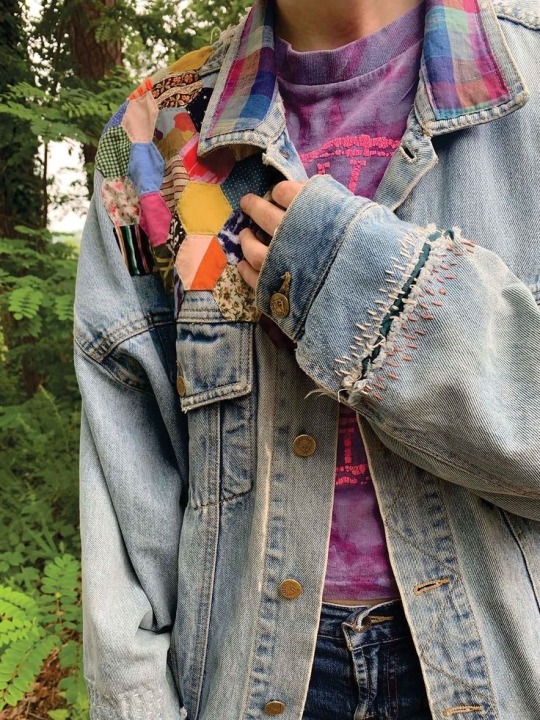
#circular fashion#upcycling#ecopunk#embroidery#environment#grunge#aesthetic#hopepunk#fiber arts#visible mending#mending#solarpunk#creative
2K notes
·
View notes
Text
youtube
Every year, nearly 100 billion items of clothing are produced – and 65% of them end up in a landfill within 12 months. New technologies in textile recycling may be able to curb that waste – while producing a host of sustainable materials.
#planeta #recycling #fastfashion #circulareconomy #textileindustry
We're destroying our environment at an alarming rate. But it doesn't need to be this way. Our new channel Planet A explores the shift towards an eco-friendly world — and challenges our ideas about what dealing with climate change means. We look at the big and the small: What we can do and how the system needs to change. Every Friday we'll take a truly global look at how to get us out of this mess.
Follow Planet A on TikTok: https://www.tiktok.com/@dw_planeta?la...
Credits:
Report: Dave Braneck
Video Editor: Frederik Willmann
Supervising Editor: Michael Trobridge
Fact Check: Alexander Paquet
Thumbnail: Ém Chabridon
Read More:
McKinsey - Scaling Textile Recycling in Europe
https://www.mckinsey.com/industries/r...
NY Times - Will We Ever Be Able to Recycle Our Clothes Like an Aluminum Can?
https://www.nytimes.com/2022/11/30/st...
EU Strategy for Sustainable and Circular Textiles https://environment.ec.europa.eu/stra...
Chapters:
00:00 Intro
00:46 Textile waste's global impact
02:47 How do you actually recycle clothes?
03:50 New approaches to textile recycling
07:41 What else needs solving?
11:41 Can we even recycle all the clothes we make?
#DW Planet A#solarpunk#fashion#fashion industry#fast fashion#fashion waste#circular fashion#recycling#textiles#textile industry#sustainable fashion#sustainable textiles#textile recycling#Youtube
8 notes
·
View notes
Text
2 notes
·
View notes
Text
About Responsible Textiles
Recommended Books
1. Sustainable Approaches in Textiles and Fashion
Edited by Subramanian S. Muthu — a technical overview covering sustainable production, processing, chemistry, and consumer behaviour in textiles. lobaostudio.com+7nypl.org+7routledge.com+7
2. Sustainable Textile Marketing
Edited by Memon, Jin, Tian & Zhu — explores sustainability in textile branding and marketing strategies, from production to consumer education. mdpi.com
3. Natural Dyes for Sustainable Textiles
By Padma S. Vankar & Dhara Shukla — a practical guide to using eco‑friendly natural dyes and greener processing methods in textiles. bol.com
4. Kantha: Sustainable Textiles and Mindful Making
By Ekta Kaul — showcases how upcycling and traditional stitching (kantha), can be a pathway to mindful, low‑impact textile crafts. zenstitching.ca
5. What is Sustainability in Textiles and Fashion
By Adil M. Qazi — offers a concise overview, including supply‑chain traceability, regenerative fashion, and tech tools like blockchain. youtube.com+3kobo.com+3guides.library.cornell.edu+3
6. Bonus Titles from Experts
Routledge Handbook of Sustainability and Fashion (Fletcher & Tham) and Fibreshed (Burgess) recommended by industry authorities fashionroundtable.co.uk
Unraveled: The Life and Death of a Garment by Maxine Bédat—an investigative journey into global textile impacts
VIDEOS / DOCUMENTARIES
The True Cost (2015)
A deeply influential documentary unpacking environmental pollution, worker exploitation, and consumerism in fast fashion en.wikipedia.org+1earth.org+1.
RiverBlue (2017)
Follows conservationist Mark Angelo on a global quest exposing fashion’s toxic impact on rivers and waterwayslobaostudio.com+3en.wikipedia.org+3earth.org+3.
Textile Mountain: The Hidden Burden
Investigates the burden of secondhand clothing exports to the Global South, and their environmental/social fallouttextilemountainfilm.com.
Unstitched: Fashion Industry & Planet
A timely exposé from Our Collective Impact focusing on the broader sustainable fashion crisis youtube.com.
Tears in the Fabric (2014)
A poignant short documenting the long-term consequences of the Rana Plaza tragedy on a Bangladeshi factory worker’s family en.wikipedia.org.
Blood, Sweat and T‑shirts (BBC series)
Six British consumers experience garment production in India firsthand, confronting the realities of the global supply chain en.wikipedia.org.
Additional Resources & Expert Insights
Fashion Reimagined — Follow British designer Amy Powney’s practical journey to craft a fully sustainable collection, exposing greenwashing and complex supply‑chain hurdles theguardian.com.
Ganni Playbook — Seeks actionable strategies ("carbon squads", preferred materials, leaving out virgin leather) for responsible business transformation vogue.com.
#Responsible Textiles#Sustainable Textiles#Ethical Fashion#Circular Fashion#Eco-Friendly Materials#Conscious Clothing#Green Manufacturing#Zero Waste Fashion#Regenerative Fashion#Biodegradable Fabrics#Sustainable Textile Books#Textile Industry Sustainability#Fashion Sustainability Books#Textile Innovation Literature#Ethical Fashion Reading#Green Textile Curriculum#Responsible Fabric Sourcing#Eco Textile Design#Fashion Ethics Education#Sustainable Textile Education#Sustainable Fashion Documentaries#The True Cost Documentary#RiverBlue Film#Rana Plaza Documentary#Fast Fashion Impact#Eco Fashion Films#Ethical Textile Production#Fashion Transparency#Waste in Fashion#Global Garment Industry
0 notes
Text
A Comprehensive Examination of Ethical and Environmentally Conscious Clothing
The fashion industry, while celebrated for its creativity and influence, is also notorious for its environmental and ethical impacts. From labor exploitation to massive waste generation, the sector has faced increasing scrutiny. This article delves into the realms of ethical and environmentally conscious clothing, exploring sustainable fashion principles, the harmful consequences of fast fashion,…
#Circular fashion#Eco-friendly materials#environmental sustainability#ethical fashion#organic cotton#supply chain transparency#Sustainable fashion#sustainable wardrobe#textile innovations
0 notes
Text
Global Circular Fashion: Embracing Fashion Globally to Create a Sustainable Fashion Future

The Rise of Fast Fashion and its Circular Fashion Over the past few decades, the rise of fast fashion has transformed the global apparel industry. Where consumers once upgraded their wardrobes a few times a year through planned purchases, they now shop more frequently, with trends changing at an ever more rapid pace. Major clothing brands now release new collections every two weeks and low prices enable frequent purchases. However, this business model has come at a huge environmental cost. The United Nation estimates that the fashion industry generates 10% of global carbon emissions annually and consumes more energy than the aviation and shipping industries combined. With increasing production volumes tied to falling garment lifespans, vast amounts of textile waste is dumped in landfills every year instead of being recycled or reused. If trends continue, the fashion industry's environmental footprint will expand significantly.
The Need for Circular Systems To create a more sustainable future, it is Global Circular Fashion away from the linear "take-make-dispose" model to a circular economy approach. Circular systems aim to design out waste and pollution, keep products and materials in use, and regenerate natural systems. For fashion, this means rethinking the entire lifecycle of garments - from design and material sourcing to production, distribution, consumption, and end of use. The goal is to transition from a disposal-oriented system to one that retains value, reuses resources, and minimizes environmental impacts. Some circular strategies that brands and policymakers are exploring include extending garment lifetime through durability and repairability, using recycled and biodegradable materials, implementing take-back and resale programs, and investing in closed-loop recycling technologies.
Corporate Leadership and Innovation Leading brands have already begun embracing circular principles to varying degrees. Swedish retailer H&M launched a garment collection program in 2013 allowing customers to drop off old clothes in stores. So far it has collected over 35,000 tons globally that are sorted and recycled or reused. Meanwhile, fashion company Ecouterre designs digitally printed collections with minimal waste using plant-based dyes and biodegradable fabrics. Outdoor brand Patagonia runs “Worn Wear,” a program promoting product repair to extend lifespan. It recently began trials for a closed-loop recycling facility in Europe. On the materials front, companies like Adidas and Reebok have launched shoe collections incorporating post-consumer recycled plastics and other sustainably sourced inputs. From design to end-of-use, these examples demonstrate feasible innovations that can scale with broader corporate adoption.
Policy Push and Regional Actions Market forces alone may not be enough to drive the systemic change required for circular transition globally. Coordinated policy push and regional cooperation are also needed. The Extended Producer Responsibility (EPR) concept extends a producer's responsibility for its product to the post-consumer stage of the product's lifecycle. Laws making brands financially and physically responsible for collecting and recycling textiles will incentivize design for durability and recyclability. The European Union recently unveiled plans for a more robust circular economy via its European Green Deal policy package. It aims to cut down on textile waste and establish EPR schemes across member states by 2025. Meanwhile, the UK has issued reforms to boost clothing resale and encourage design for longer use-phases. On a city level, Amsterdam and Paris are piloting fashion collection bins linked to brands' takeback programs to improve recycling rates. Combined top-down policy nudges and bottom-up innovations could help deliver on the promise of circular fashion globally.
Challenges of Adoption in Developing Markets While circular initiatives are gaining steam in developed markets, their adoption faces considerable challenges in emerging economies that are big fashion consumers and producers. Commercial RESALES programs are yet to meaningfully take off in regions like Southeast Asia due to low standards for used clothing and resale platforms. Collection and sorting infrastructure also remains underdeveloped compared to brand-run programs in the West. Local recyclers lack access to recycling technologies and face supply chain barriers. Affordability further affects consumers' ability to pay premiums for sustainable options or access garment rental/repair services popular in wealthier nations. Overcoming these socioeconomic obstacles will require hybrid business models tailored for lower-income demographics together with public investments in waste management infrastructure. Cooperation between international brands, domestic manufacturers, and regional stakeholders can help accelerate the circular transition process in developing economies.
Need for Multilateral Action and Public Engagement As fashion globalizes, the shift towards circularity similarly demands coordinated action worldwide. Issues like plastic pellet pollution, carbon leakage across supply chains, and global trade in textile waste underline the need for binding multilateral agreements. The UN Sustainable Development Goals provide a framework, but more concrete international regulations and collaborative platforms are still lacking. Public awareness and individual consumer choices also prove influential. As citizens demand transparency from brands and opt for resale over disposable trends, it pressures companies to clean up act. Governments must educate masses and incentivize sustainable behavior through programs like subsidies for repairs. Lastly, multi-stakeholder organizations coupling businesses, non-profits and researchers can aid knowledge sharing to speed up circular innovations globally. Only through united efforts across public, private and non-profit spheres will the vision of an inclusive circular economy take true shape worldwide.
In conclusion, making sustainability the status quo requires transitioning the trillion-dollar fashion industry onto a circular path. While different regions and actors will progress at varying speeds, collective action supported by policy, innovation and public advocacy offers hope. By addressing the root causes of waste embedded in today's linear take-make-waste model, the industry can evolve to better protect people and planet for generations to come. A circular future demands new systems of design, production and consumption but change begins with individual and joint determination to create a fashion industry that nurtures natural and social capital for all. Get More Insights On, Global Circular Fashion For More Insights Discover the Report In language that Resonates with you
French
German
Italian
Russian
Japanese
Chinese
Korean
Portuguese
About Author: Ravina Pandya, Content Writer, has a strong foothold in the market research industry. She specializes in writing well-researched articles from different industries, including food and beverages, information and technology, healthcare, chemical and materials, etc. (https://www.linkedin.com/in/ravina-pandya-1a3984191)
0 notes
Text
The Dilemma Of Ethical Fast Fashion: A Closer Look
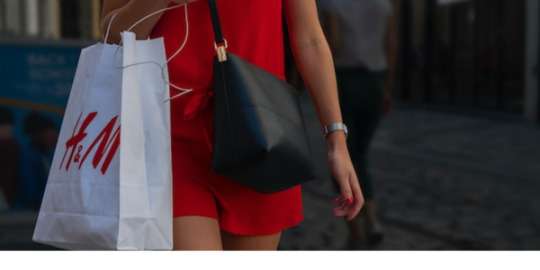
View On WordPress
#Circular fashion#Consumer choices#Consumer demand#environmental impact#ethical Case studies#Ethical fashion#Ethical fashion brands#Fast fashion#Fast fashion challenges#Future of fashion#Innovation in fashion#Labor practices#Supply chain transparency#sustainable fashion#Sustainable materials
1 note
·
View note
Text
and suddenly I am a depop seller



I have been selling clothes from my closet for a very long time at this point. Not very seriously, just as a passive income to experiment more with my wardrobe. Over time I became more aware of the fashion industry's effect on the environment. Thrifting became one of my favorite hobbies and it is impossible to ignore the quality difference between current fast fashion and clothes that were made 20+ years ago. And the more I have learned, the more passionate I have become about both collecting and selling these items. I truly believe that "reselling" (however controversial that word may seem) is one of the most ethical jobs that a person can have in these almost apocalyptic times. (At least it feels apocalyptic to me.) So basically I have gone from a passive seller to someone who is trying to become a full time seller.
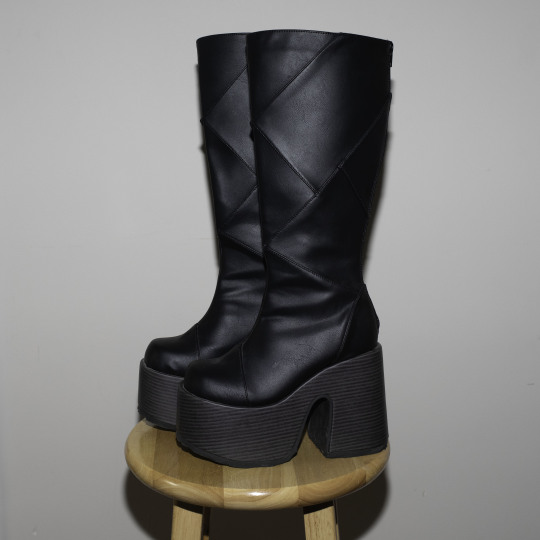
Throughout this time I have had another job and even though my sales on depop the last month have been down, I have been hoping that I would be able to quit and pursue my passion very soon. Unexpectedly, my employer is most likely changing ownership and I will soon be given the chance to leave. And while I feel excited, I also feel scared as hell. It’s kind of feeling as if the rug has been pulled beneath me. Do I fall or do I land on my feet? At the worst, I start applying at other local second hand stores and work in a field that is more interesting to me.
This puts me in a unique position where I almost desperately and passionately have to advertise my shop. It’s not something that comes easy because I worry about being annoying or how other people who aren’t neck deep in learning about the effects that textile waste has on the planet will think of me. But I want to prove to myself that I can succeed and I (no matter how fucking difficult it may be) can step up to the plate.
#depop shop#depop#sustainable fashion#thrifting#secondhand#onlineshopping#circular fashion#sustyfashion#sustainability#ethical fashion
0 notes
Text
Circular Fashion: What It Is + Is This The Solution?
Circular fashion is something we need in this ever evolving fashion world To care for the environment, we have to
0 notes
Text
What is Circular Fashion Design?
Circular fashion design aims to create a closed-loop system, minimizing waste and promoting sustainability. It prioritizes the entire lifecycle of a garment, focusing on eco-friendly materials, longevity, repair, and recycling, to reduce the environmental impact and foster a circular economy in the fashion industry.
0 notes
Text
"Polish presidency of the EU Council announced breakthrough in early hours after marathon overnight talks on food waste reduction targets and measures to limit a throwaway clothing culture.
The EU has set its first ever legally binding targets for member states to cut food waste, with lawmakers agreeing on a 30% cut across retailers, restaurants, caterers and households by the end of the decade.
For food processors and manufacturers, the 2030 goal is a 10% reduction, with both targets based on the average in the three years to 2023. EU estimates suggest that over 59 million tonnes of food is shovelled into dustbins every year, representing a loss of €132 billion.
Reforms to the EU’s waste framework directive, agreed this morning [February 19, 2025] after a marathon negotiating session behind closed doors between MEPs and government delegates, also target the textiles industry.
New harmonised rules on extended producer responsibility (EPR) mean textile producers and fashion brands will have to pay a fee to help fund waste collection, sorting and recycling, based on how circular and sustainable their products are.
In a measure directly targeting ‘fast fashion’ practices such as cheap, almost disposable clothes from online platforms, EU governments are also empowered to adapt these fees based on the durability of garments.
“The rapidly growing e-commerce market brings many opportunities, but also represents a significant challenge, especially in terms of environmental protection,” the agreed text runs.
The legislation gives leeway to penalise aggressive marketing strategies that encourage clothes to be discarded before they are worn out, practices that according to the legislation are “likely resulting in an overconsumption of textile products and, consequently, an overgeneration of waste”.
Criteria that can be considered include the width of the product range offered by a retailer, and the provision or lack of a repair services and incentives.
Anti-waste campaigners welcomed EU action, but were disappointed by the level of ambition reflected in the headline targets.
“The EU and its member states committed to the UN Sustainable Development Goals 10 years ago, including a 50% reduction of food waste across the entire supply chain,” said Theresa Mörsen, a policy officer at the Brussels-based NGO Zero Waste Europe...
The agreement is provisional, subject to a rubber stamp from government ministers at an EU Council summit – a procedure which is normally a formality."
-via EuroNews, February 19, 2025
#fast fashion#food waste#food production#europe#eu#european union#waste#circular economy#textiles#fashion#fashion news#good news#hope
981 notes
·
View notes
Text
Unleash Your Creativity: Ten Upcycling Ideas for Sustainable Living
In a world where waste continues to burden our environment, upcycling offers a creative and sustainable solution. Upcycling involves transforming unwanted or discarded materials into new and useful products, reducing waste and conserving resources. We will explore ten specific ideas for upcycling that you can easily incorporate into your daily life. From repurposing household items to breathing…

View On WordPress
#art#circular economy#circular fashion#diy projects#eco-friendly#lists#reduce waste#sustainability#top ten#upcycling
0 notes
Text
‘The onus is now on us to innovate our way out of a problem we did not create.’
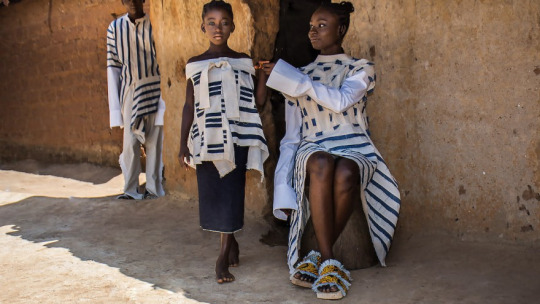
So says Nkwo Onwuka, founder and Creative Director of Nigerian artisanal clothing brand NKWO Official, and a pioneer of sustainable fashion on the continent. On 15 August 2024 at Workshop17 at the V&A Waterfront, the designer will headline Africa Textile Talks, an educational journey into the heart of sustainable textiles, slow fashion and design.
I have named my presentation 'The Last Square Loom'. Without giving too much away, the loom serves as a metaphor for the restrictions we impose on ourselves or that have been imposed on us and how we need to break out of these confines to build up our communities and ensure the preservation of our culture and heritage.
Source
#solarpunk#solar punk#africa#jua kali solarpunk#reculture#solarpunk aesthetic#nigeria#fashion design#sustainable#circular
24 notes
·
View notes
Text
The Rapid Rise of Europe Fast Fashion first emerged in Europe in the 1990s as clothing retailers started

The Birth of Fast Fashion Fast fashion first emerged in Europe in the 1990s as clothing retailers started noticing consumers' desire for more affordable and on-trend pieces. Retail giants like H&M, Zara, and Topshop pioneered the fast fashion model by slashing production cycles and getting new designs from the runway to stores in just a few weeks. They were able to achieve this speed through vertically-integrated supply chains, large scale manufacturing, and data-driven demand forecasting. Fast fashion allowed mainstream consumers to participate in short-lived fashion trends without breaking the bank. Retailers were able to turn inventory over much more quickly and boost profit margins. By the 2000s, fast fashion had completely disrupted the traditional clothing industry and become the dominant retail model across Europe fast fashion .
Fueling Rapid Consumption Europe Fast Fashion is based around constant newness and encouraging high consumption volumes. Retailers release new collections almost weekly to give shoppers a reason to return to stores frequently. Pieces are designed to be worn a few times before being replaced. Affordability is key so consumers can build whole new wardrobes several times a year. ing heavily features celebrity endorsements and runway trends at low prices. This has compelled customers, especially younger generations, to view clothing as disposable. Rental and resale s have also boomed as people tire of pieces more quickly. Fast fashion has supersized the clothing industry but also contributed to overconsumption. The average consumer now buys 60% more clothing items but keeps them half as long compared to 15 years ago. A Mounting Environmental Toll The rapid pace of fast fashion has come at enormous environmental cost. The textile industry is one of the most polluting globally due to excessive water, chemical, and energy usage at each stage of the supply chain. Synthetic fabrics like polyester are resource-intensive to produce yet end up in landfills. Greenhouse gas emissions from clothing have risen significantly due to surging demand. An estimated 92 million tons of textile waste is produced annually but less than 1% is recycled into new materials. Dump sites in developing countries have been inundated with cast-off clothes from Western consumers. Dyeing and finishing processes also contaminate waterways with harmful chemicals. There are also serious human impacts as many fast fashion factories have poor working conditions and pay unlivable wages. The breakneck speed of production exacerbates these societal and ecological problems. Regulations and Initiatives for Reform In response to mounting sustainability concerns, policymakers in Europe fast fashion have introduced various regulations on the fashion industry. Legislation like the EU Green Deal aims to mandate greater circularity, reduce waste, and promote eco-friendly materials by 2030. France banned destroying unsold stock while Italy levied a tax on landfill disposal of textiles. Retailers are pushing for extended producer responsibility schemes to finance take-back and recycling programs. Meanwhile, a growing number of sustainability-focused startups are partnering with brands. Technologies like solvent-free dyeing, waterless manufacturing, and garment-to-garment recycling aim to green transformation from within. Some major fast fashion companies have also pledged commitments to reduce environmental impact, increase sourcing transparency, and empower factory workers. While these are positive steps, bolder systemic changes are still needed given the fast fashion business model's inherent unsustainability. Looking ahead, the future of Europe fast fashion remains uncertain. In the short-term, demand is rebounding strongly after COVID-19 disruptions buoyed sales. But long-term projections show declining appetite for disposable trends among younger and more values-driven consumers concerned about waste and exploitation. Resale platforms are gaining popularity as an alternative that supports extended use. Increasing regulation and public pressure may compel brands to shift strategies or face stiff penalties. Those able to transition to genuinely sustainable, circular systems will be better positioned for longevity. Others must adapt or potentially fall behind. Innovation in areas like digital manufacturing customization, rental platforms, and technology-enabled traceability are revealing new paths for industry transformation. While fast fashion currently dominates the , its dominance may be limited if it cannot align with mounting expectations for responsible production and consumption.
Get More Insights On, Europe Fast Fashion
For More Insights Discover the Report In language that Resonates with you
French
German
Italian
Russian
Japanese
Chinese
Korean
Portuguese
About Author:
Ravina Pandya, Content Writer, has a strong foothold in the market research industry. She specializes in writing well-researched articles from different industries, including food and beverages, information and technology, healthcare, chemical and materials, etc. (https://www.linkedin.com/in/ravina-pandya-1a3984191)
0 notes
Text


Barbie Dream Besties Teresa sunglasses » Balenciaga fluffy cat sunglasses
#there’s none in brown and they’re not circular but the red fits better anyway smh#I’m actually so obsessed with her face she’s so cute#Barbie#fashion parallels#Barbie dream besties#dollblr#doll collector#doll fashion#fashion dolls#barbie teresa#balenciaga
35 notes
·
View notes
Text
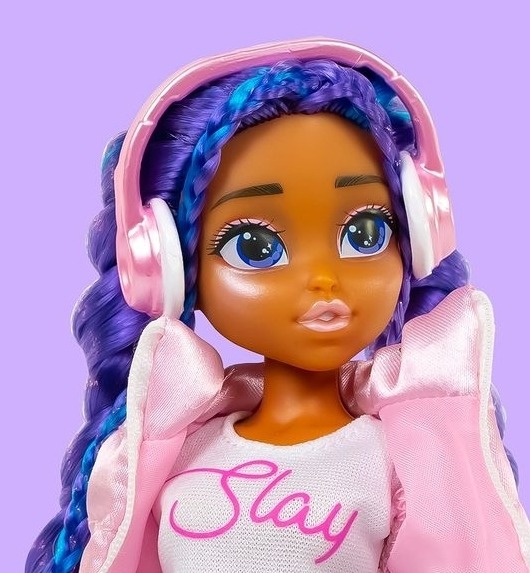
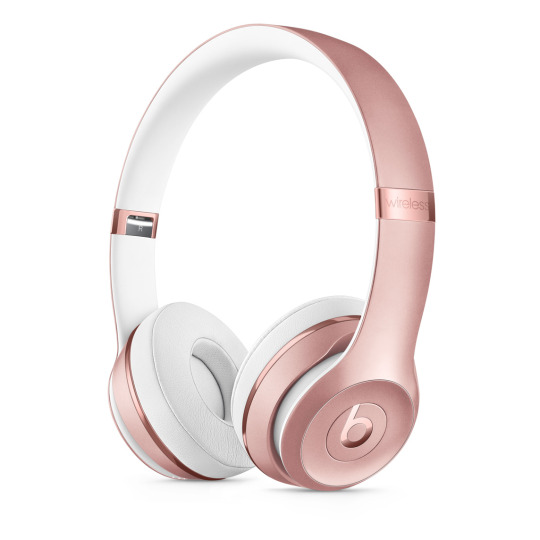
Stylistaz Shopping Spree ~ Mia |🛍| Beats Solo3 Wireless Headphones
#a bit hard to see in the stock photo but her headphones have the same concave ear pieces and circular logo#dolls#fashion parallels#stylistaz#stylistaz shopping spree#stylistaz mia#dollblr
30 notes
·
View notes